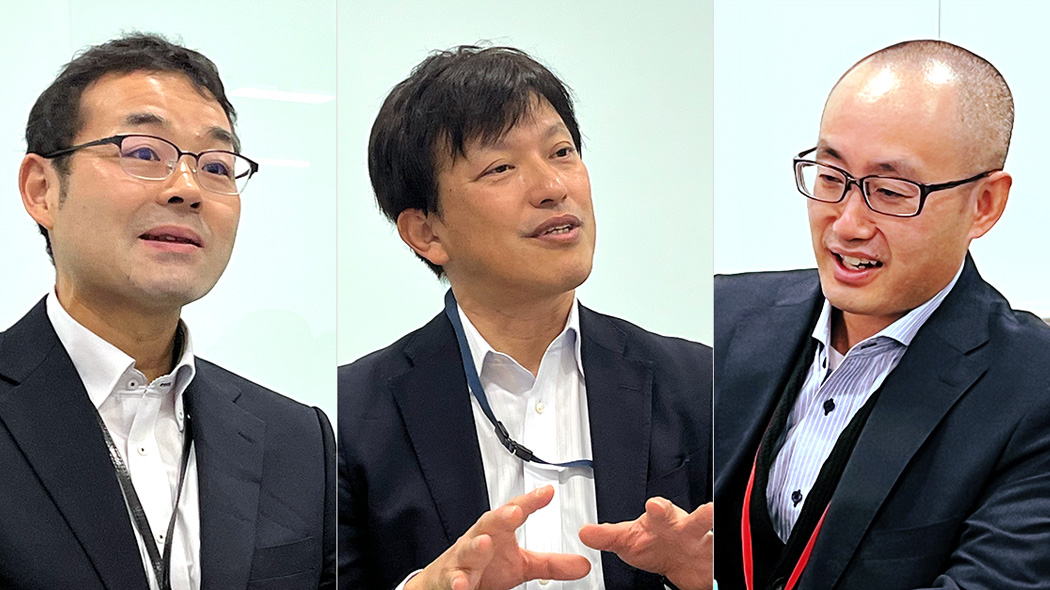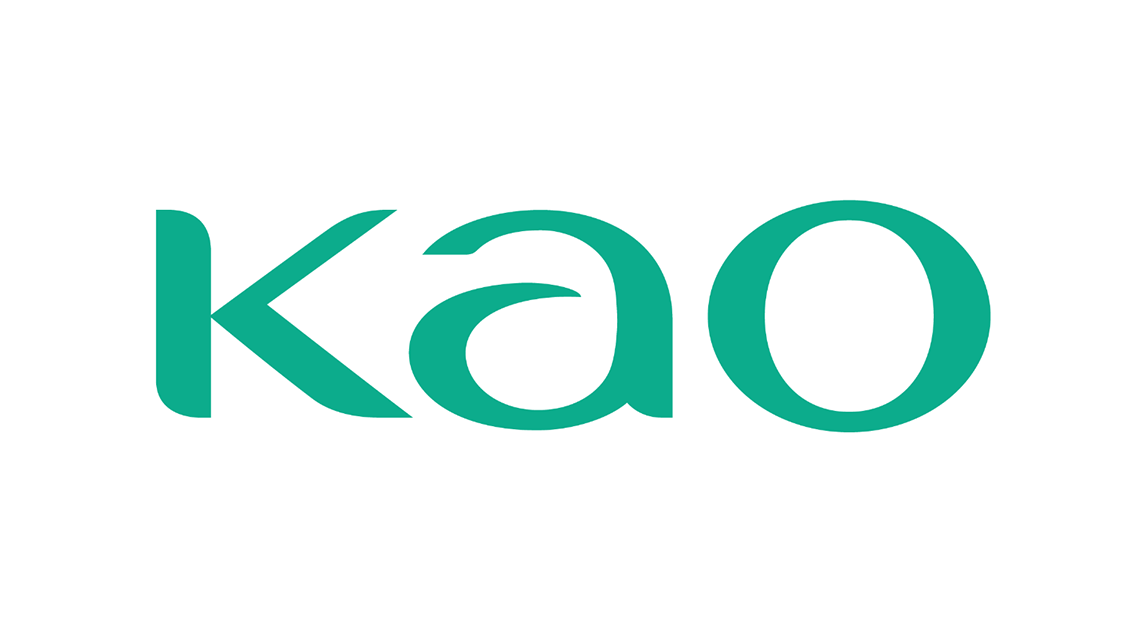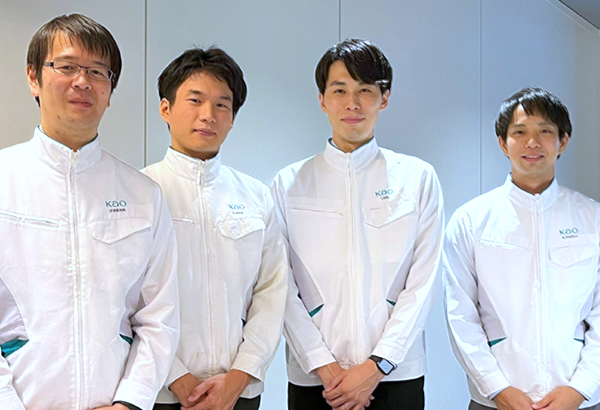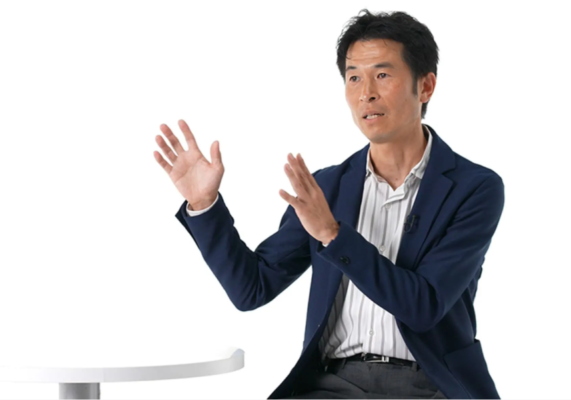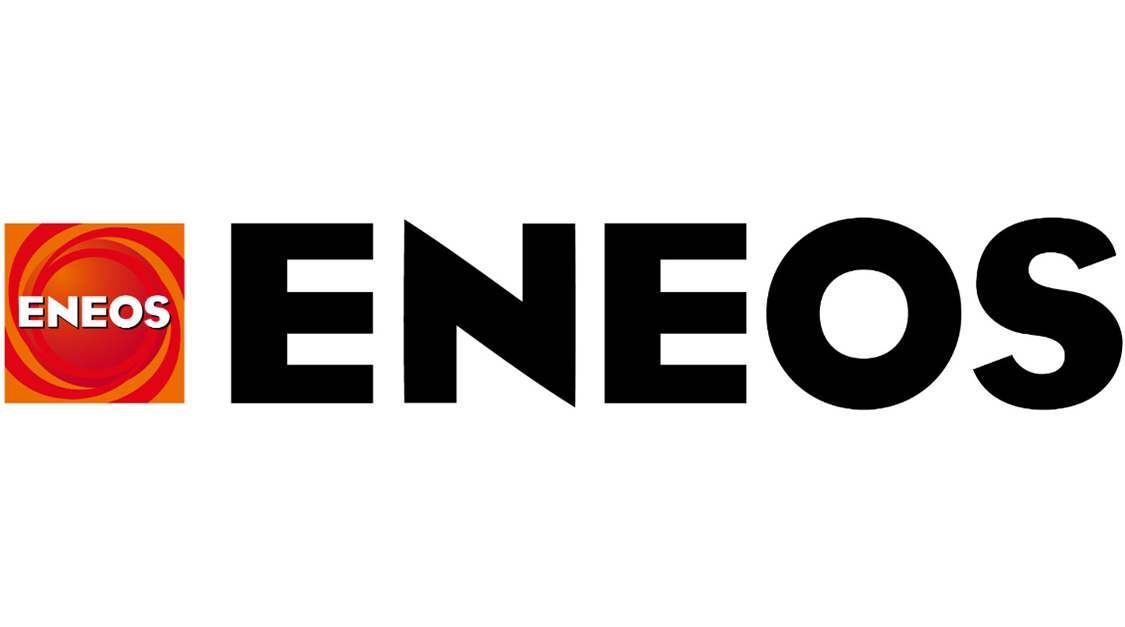Matlantis enables a development process that shifts from the traditional "test-first" approach to "calculation-first" testing.
- AGC Inc.
- Industry: Glass, Chemicals
- Business: Manufacturing and sales of architectural glass, automotive glass and other products for industries including electronics, chemicals, life sciences and ceramics.
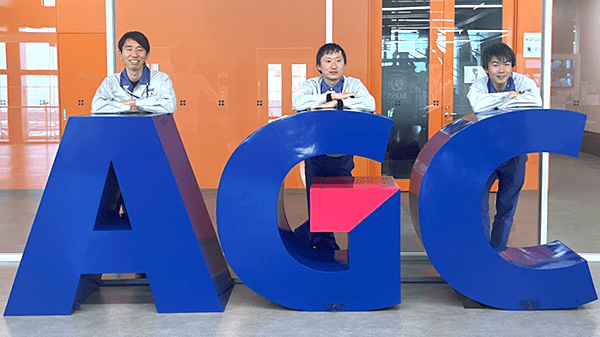
From left to right: Takeyuki Kato, Taku Yoshida, Ryosuke Sei, AGC Inc.
To provide unique solutions to their customers, AGC takes a comprehensive approach to a range of materials from glass, chemicals to electronic parts. In this process, AGC’s experimental chemists have recently started using Matlantis. We have asked three materials researchers at AGC about reasons why they introduced Matlantis and how different teams use the universal atomistic simulator.
Q. What kind of research and development projects have you been working on?
Kato: I am an experimental scientist working on glass materials at our inorganic materials department. My duty is to suggest and search for glass compositions that meet the quality requirements of various products.
Sei: I am an experimental scientist working on coating materials. Our goal is to increase a variety of products’ values by coating them with functional membranes. In addition to materials discovery, I develop mass production processes. Recently, we were able to introduce photomask blanks for EUV lithography to the market.
Yoshida: I am a computational chemist working on materials simulation. I support research and development for materials and production processes with computational chemistry, and suggest advanced new technologies that can be useful for them. One of my important duties is to introduce new technologies like machine learning potential and make it accessible to my colleagues.
Q. What are your impressions on Matlantis as experimental scientists?
Sei: It has been almost one year since I started using Matlantis. Before that, computational chemistry was something I had to work hand-in-hand with specialists, and I didn’t really know about machine learning potential. I was first afraid Python coding would be too hard but after using Matlantis and diligently learning some of it, it’s not as intimidating as I thought and now I’m using Matlantis with no big issues as a coding novice. I first tried verifying some systems of which I already knew the experimental results, and it was quite a surprise to me that Matlantis gave me the results that almost match the absolute values of their compositions.
Kato: I also compared the results from conventional simulation methods versus Matlantis at first and had the impression that it could work. I kept using Matlantis in my research and it has indeed shown some clear advantages, and now I see what’s great about it.
Q. Has your research process changed after introducing Matlantis?
Sei: I specialize in the dry coating technology which involves non-equilibrium processes, and that means it’s a bad fit for computational chemistry. Because density functional theory (DFT) calculations take enormous time, its applications are limited to the simulations of simplified properties at equilibrium. Thus, I have not had many opportunities to use DFT simulations. Non-equilibrium processes can be reproduced with Matlantis, and I feel that it can also reproduce structures that were difficult to handle with conventional technologies. It’s truly remarkable that I can perform simulations without simplifying the actual phenomena. I think Matlantis is paving the way for computational chemistry to become useful in the coating domain.
Kato: In classical molecular dynamics – the conventional simulation method – you first have to pick an experimental phenomenon that you want to solve, and then develop force field parameters to accurately reproduce it. It was all experiment-first. With Matlantis, on the other hand, I believe scientists will be able to first calculate and then experiment it.
Yoshida: To my side as a computational scientist, the biggest change is that we have wider options for different approaches. Now that we have added Matlantis to conventional methods such as classical molecular dynamics and DFT, we may have more ways to approach issues that were previously difficult to solve using computational chemistry.
Q. Have there been any other changes?
Kato: Matlantis has changed my own view on research. My first-hand experience with this brand-new tool gave me a sense of urgency that we would be left behind unless I improve my computational science skills and literacy to give valuable feedback to the experiment team. It also renewed how I see my experiments and calculations as I feel I must now take account of what computational chemistry couldn’t previously achieve as well. I think Matlantis has changed me as an experimental scientist.
Q. What are your future goals with Matlantis?
Kato: I’d like our research projects to take the ideal calculate-then-experiment loop which has become possible with Matlantis. I’ll promote it around myself and make sure more experimental scientists can use it.
Sei: Ever since I was a student I’ve been told I should be moving my hands before thinking in my head. But now I feel it’s important for experimental scientists to give results just as we thought. Matlantis helps us with the process, and I look forward to adding more case studies. I particularly want other experimental scientists to know that being able to run simulations on their own is a big advantage.
Yoshida: My goal is to accelerate the materials development cycle by effectively adding computational chemistry, materials informatics and digital transformation. We need to design such cycles differently for many materials and themes that AGC is working on, and for that we’d like to use Matlantis in a variety of domains and expand our materials development possibilities. We are seeing Western “big tech” companies tapping into materials research. I believe Matlantis greatly helps companies that strive to survive in this competitive environment.
Takumi Yoshida
Manager,
Software Science Team,
Common Base Technology Division
Innovative Technology Laboratories
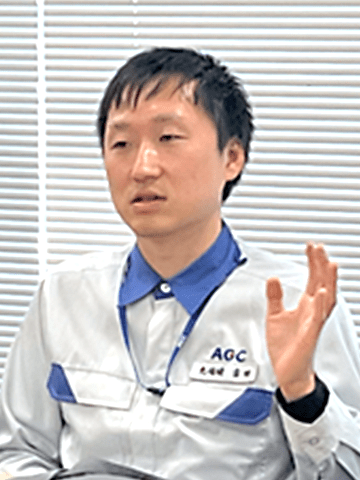
Ryosuke Sei
Manager,
Coating Team,
Functional Materials Division,
Technology General Division Materials
Integration Laboratories
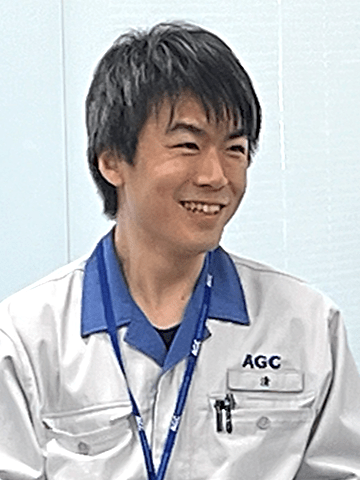
Takeyuki Kato
Glass and Ceramics Materials Team,
Inorganic General Division,
Technology General Division Materials Integration Laboratories
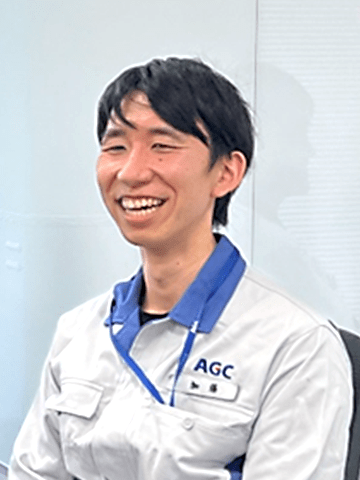
AGC Inc.
Asahi Glass Co., Ltd. (now AGC Inc.) was established in 1907 in Amagasaki, Hyogo Prefecture, Japan. AGC is the first Japanese company that succeeded in manufacturing flat glass. The company changed its name to AGC Inc. in 2018. AGC’s business domains include architectural glass, automotive glass, electronics, chemicals, life science and ceramics.
For more information, please visit the following website:
Head Quarters: Shin Marunouchi Bldg, 1-5-1, Marunouchi, Chiyoda-ku, Tokyo(Reception 1F)
- Website:https://www.agc.com/
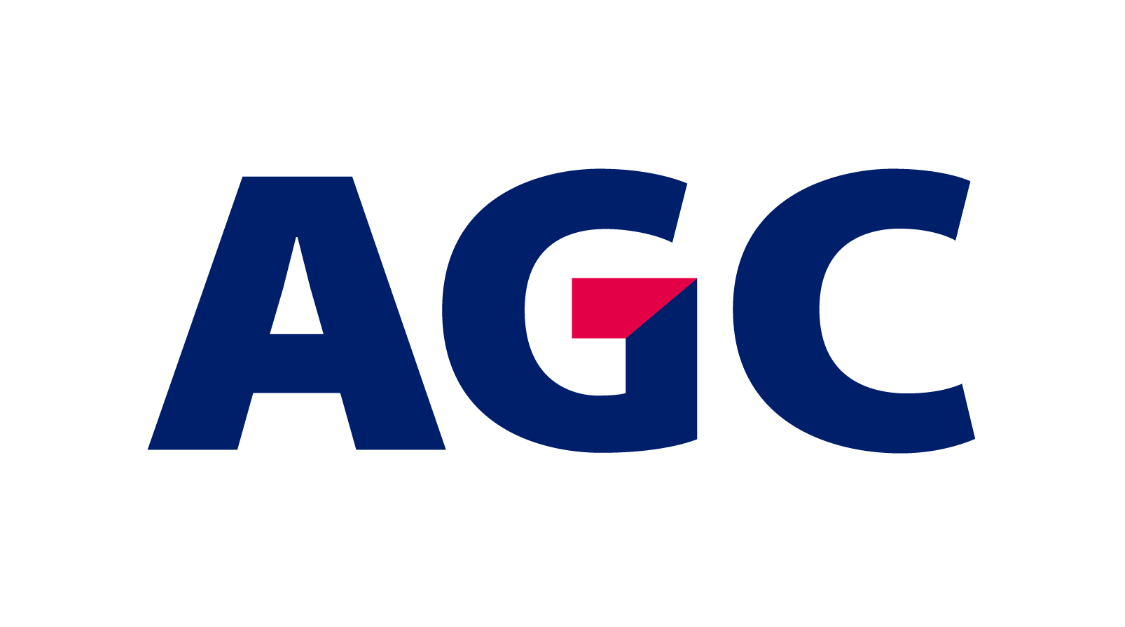
*Company names and product names appearing in this document are trademarks or registered trademarks of the respective companies.
*The information is current at the time of the interview.
Published: April 25, 2024

